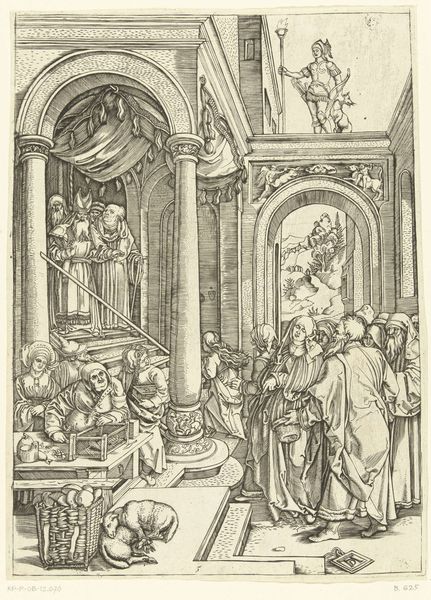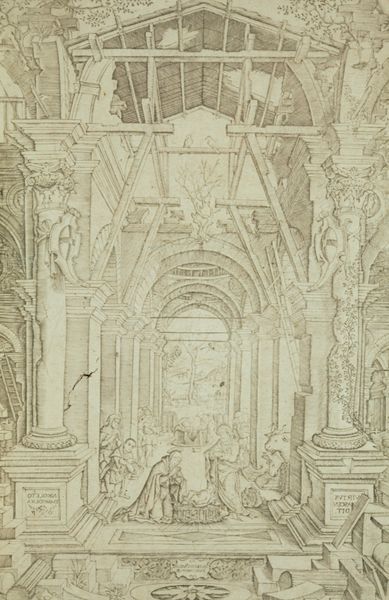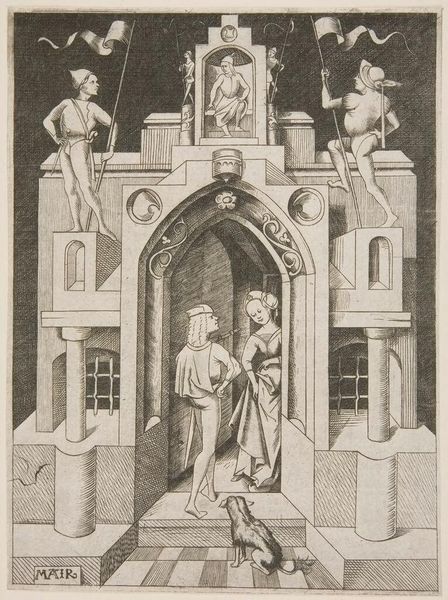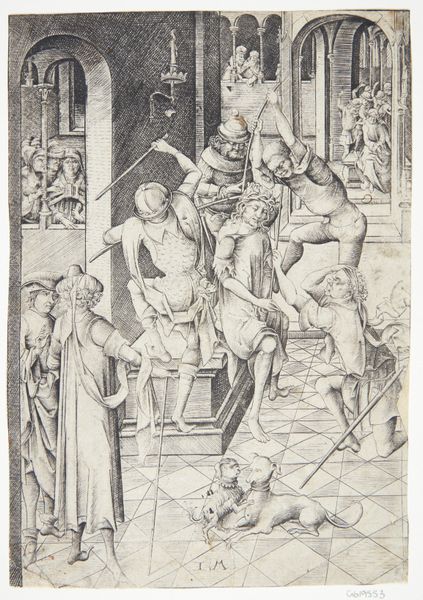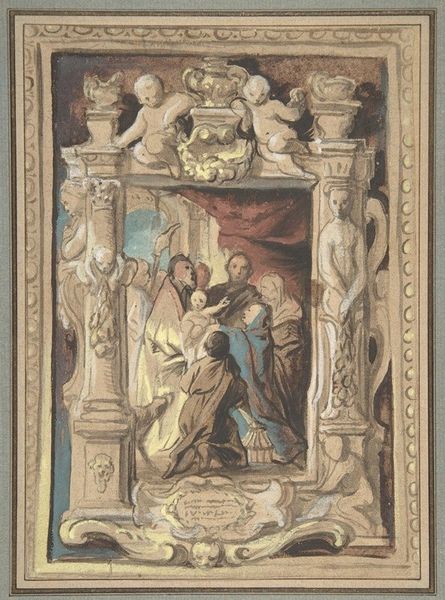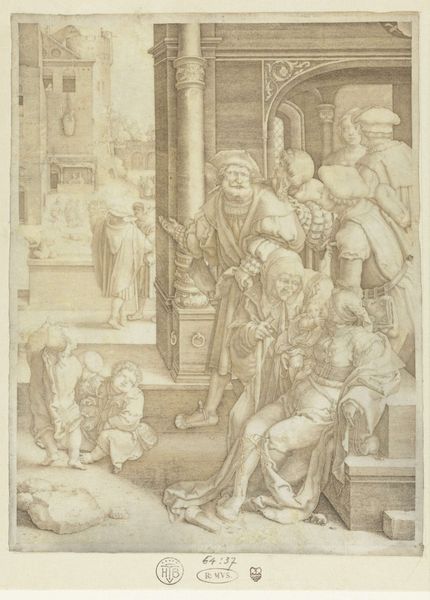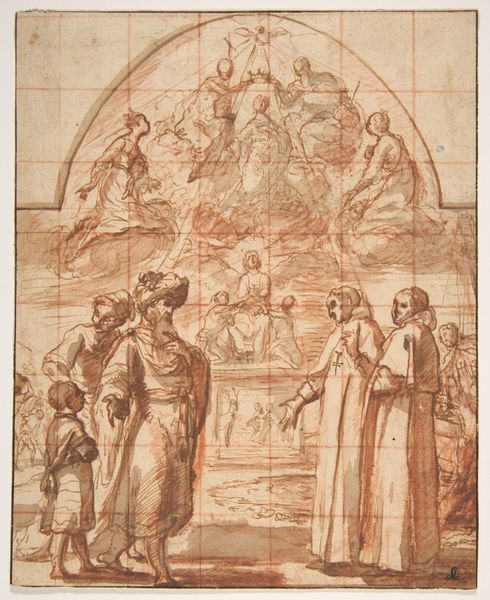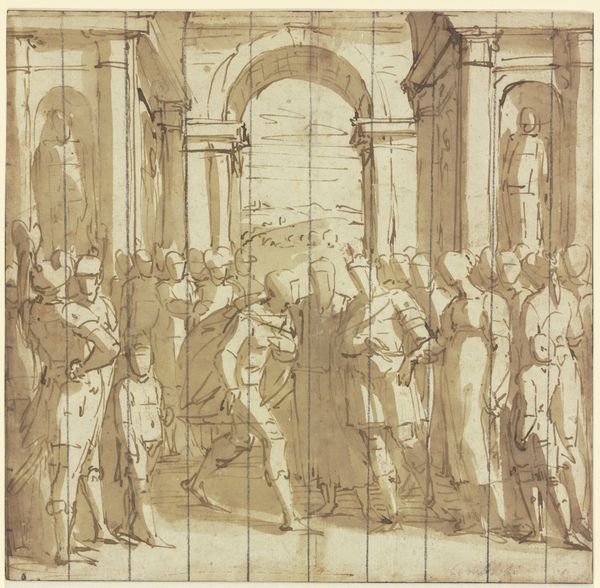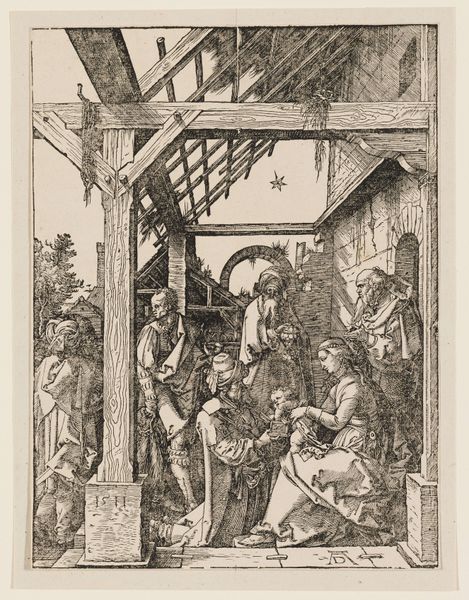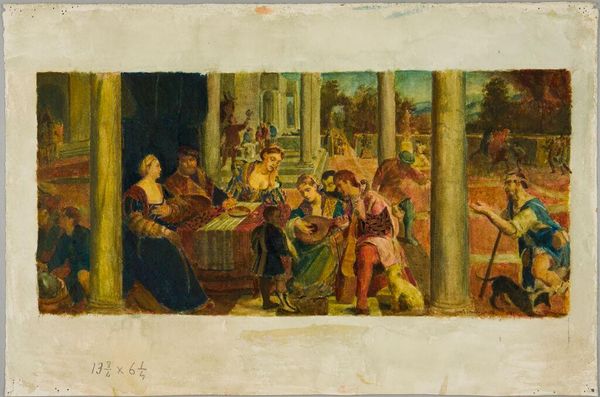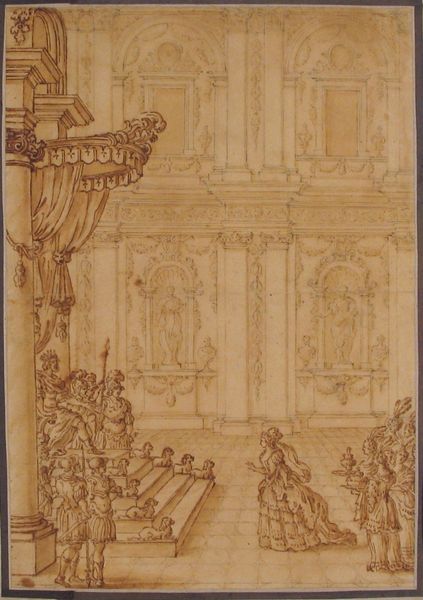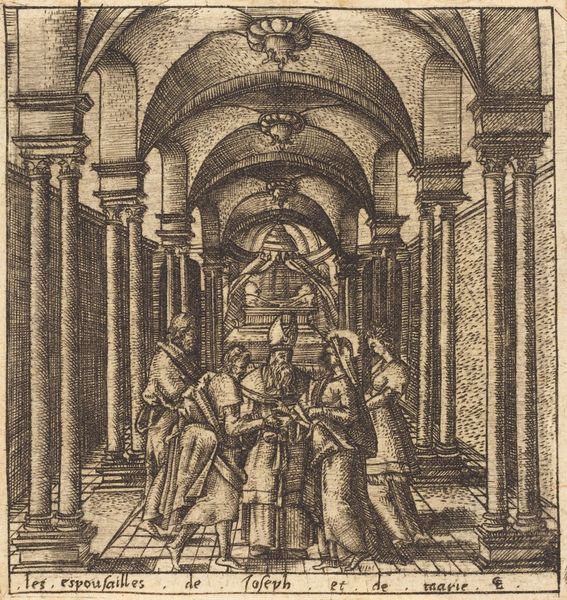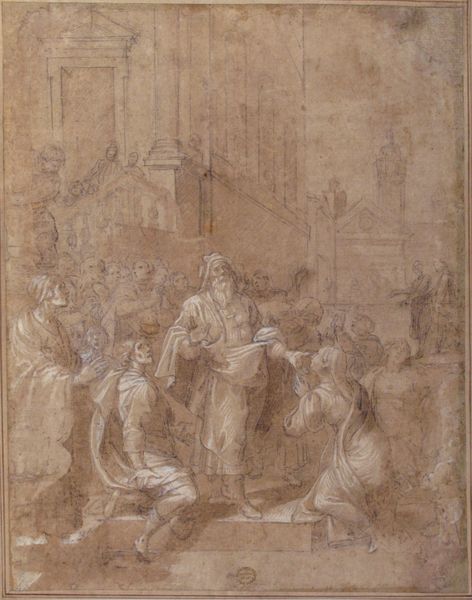
The Miracles of San Bernardino. Miracle baby born with one dead 1473
0:00
0:00
pietroperugino
National Gallery of Umbria (Palazzo dei Priori), Perugia, Italy
painting, oil-paint, fresco
#
portrait
#
narrative-art
#
painting
#
oil-paint
#
landscape
#
perspective
#
figuration
#
fresco
#
oil painting
#
classicism
#
group-portraits
#
christianity
#
genre-painting
#
history-painting
#
academic-art
#
italian-renaissance
Copyright: Public domain
Curator: Pietro Perugino painted "The Miracles of San Bernardino. Miracle baby born with one dead" around 1473. It’s a compelling piece currently held at the National Gallery of Umbria in Italy. What are your initial thoughts? Editor: The architectural space dominates, doesn't it? Almost theatrical. The light's so evenly distributed it flattens the figures, giving a stage-like quality to the events unfolding. Curator: The rendering of the scene gives particular weight to elements relating to divine intervention. Look closely at the infant and the golden halo, these convey messages about miraculous moments, hope, and redemption. The painting would have been part of a larger narrative altarpiece dedicated to Saint Bernardino. The narrative style was very typical for the period. Editor: So, beyond the religious symbolism, the materials tell a story of economic realities. Consider the pigments: the ultramarine, for example, ground from lapis lazuli. That speaks of investment, patronage, and the sheer cost of producing such an image. How the commission reflected social prestige and control during the Renaissance era is the point here. Curator: Absolutely. You’re hitting on the tension between divine message and earthly materials. Consider the landscape peeking out of the back archways, a utopian space perhaps. It’s meant to connect with other divine elements included in the fresco. Editor: Landscape or stage design? Either way it creates an idyllic, sanitized world. It obscures the grit, labor, and exploitation behind that gleaming scene. Think of the labor to erect such elaborate scaffolding, the apprenticeship needed to make oil paint itself, all to serve this carefully constructed display. The material production elevates an illusion. Curator: Your perspective makes one wonder about the real lives obscured by these saintly narratives. Still, the halos remain. I find myself thinking of these babies. How representations of infant mortality carry collective anxieties across centuries. Editor: In conclusion, seeing beyond the golden glow, and exploring production value unveils social hierarchies that support not only the making but our perception and idealization of sacred history. Curator: Yes. Examining both the visible symbols and the invisible processes broadens our understanding and reveals multiple stories within this remarkable altarpiece by Perugino.
Comments
No comments
Be the first to comment and join the conversation on the ultimate creative platform.
